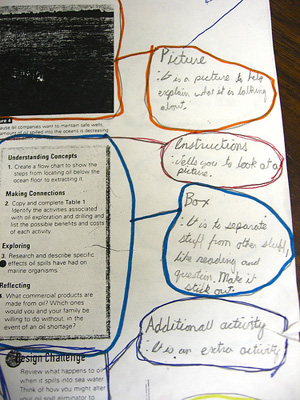
Source: Annotate a Text 1, mrfishersclass, Flickr
Annotation is a “writing-to-learn” strategy. It consists of writing explanatory notes and critical (analytical) commentary to yourself. When you annotate, you write on or mark text to indicate its special importance.
Annotating text consists of two steps: (1) underlining, highlighting, circling, or marking the author’s words in some way and (2) writing notes in the margins. Depending upon your purpose for reading, your marginal notes might include summaries, explanations, observations, clarifications, interpretations, predictions, and questions.
One great advantage of annotating as you read is that it helps you fight fatigue and distraction when you are studying or testing. Although students often complain that annotating slows them down, the opposite is actually true. You won’t have to spend valuable time rereading because your mind wandered. You’re also less likely to lose your concentration when you’re actively reading (marking the text).

Source: Coloured Pen Lids, incurable_hippie, Flickr
Most importantly, when you mark text, you create a trail that will guide you when you return to the material later. If you read the text passively without marking it, your understanding and recall of what you read will not be as sharp or focused.
Study the chart below. The first column lists tools that will help you annotate. The second column lists methods for marking the text. The last column makes suggestions for what to mark in a text. Your purpose for reading will determine which techniques you choose for marking the text and what information you chose to mark.
| Tools | Techniques | Information to Mark |
|---|---|---|
|
|
|
Feel free to create your own system, but be consistent. For example, always highlight main ideas in one color and supporting details in another. Consistency will be helpful when you review the text. The goal is to leave a trail that will make it easier to find information on a second reading.
Like any skill, annotating requires practice, so let’s get started!